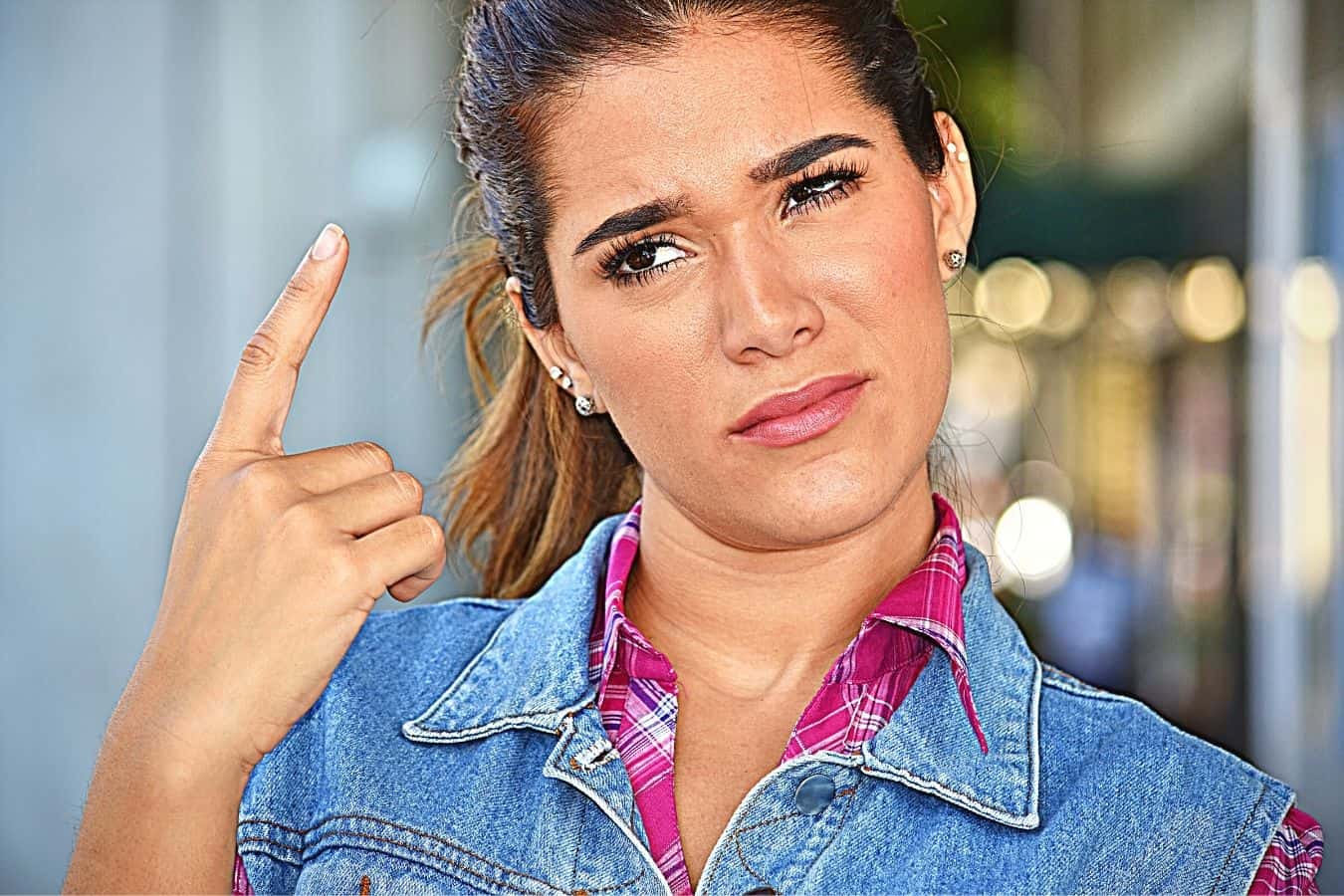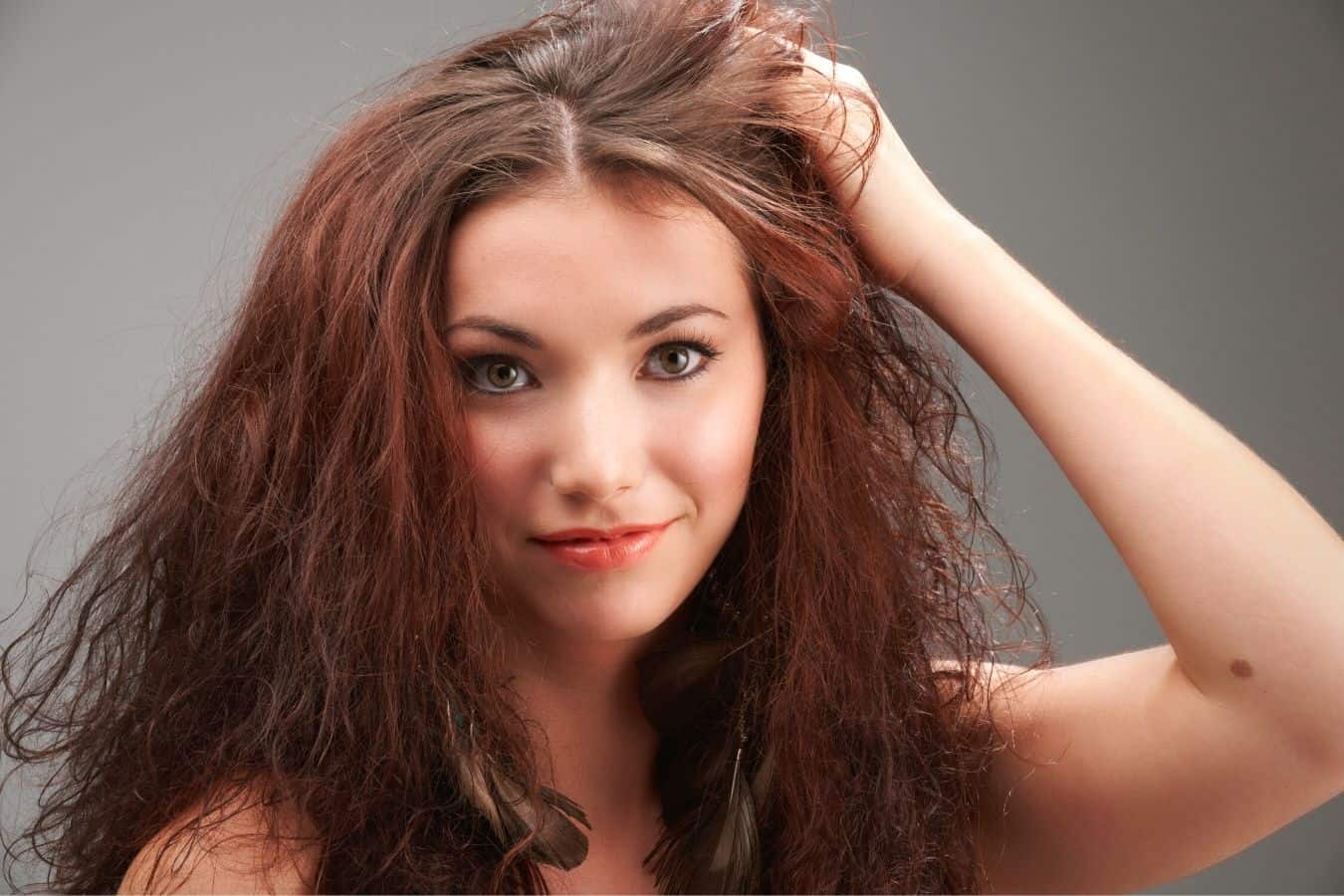We are often told to add protein to our hair care routine if we have dry, damaged hair. But what happens if your hair turns frizzy after a protein treatment?

Why Does Hair Need Protein?
Protein is essential for hair health because hair is mostly made up of protein.
If your hair is frizzy and unmanageable, limp, and prone to breaking, then you need a protein treatment to balance it out and enhance the health of your hair.
Benefits Of A Protein Treatment
Protein treatments strengthen hair, provide elasticity, shine, gloss and make the hair more manageable by preventing breakage.
A protein treatment can also help to straighten your hair so that it doesn’t look puffy or frizzy.
Hydrolyzed proteins are particularly effective at repairing damaged hair and are tiny fragments of the proteins.
When used, they get infused into the hair, especially in the middle layer. This provides strength and elasticity while helping to fill in the gaps in the broken cuticle caused by chemical and heat styling tools.
Hydrolyzed proteins from peas are specifically easier to infuse into the hair’s middle layer to provide better strength and elasticity.
They’re also more likely to get attached to the broken cuticle to fill in those gaps that are caused by chemicals and heat styling tools.
Hydrolyzed pea protein also adds an average of 14% volume to hair without wearing it down because of its slow molecule weight.
Furthermore, hydrolyzed pea proteins also contain an important amino acid called lysine which nourishes the hair and scalp so that your hair can glow from within, so to speak.
So if you’re looking for a protein treatment to use at home, look for products that contain hydrolyzed pea protein.
Also Read: Protein vs Deep Conditioning Hair Treatment; Which Do I Need?
Why Is My Hair Frizzy After Protein Treatment?

A protein treatment can make hair shinier, glossier, healthier, and more manageable.
But if that’s the case, then why can hair become frizzy after a protein treatment?
Well, a protein treatment gone wrong can lead to unwanted effects such as dry, poofy, and frizzy hair.
This happens because most protein treatments are mainly meant to strengthen the hair and don’t contain any conditioning properties.
It can also happen due to the inappropriate application of protein treatments.
You see, protein treatments are meant to repair and strengthen damaged and porous hair. So, when applied to already healthy hair, it can cause dryness. That’s the frizz.
How To Fix Frizzy Hair After Protein Treatment

Protein treatments are very safe when done by a professional stylist.
While there are certain protein products that you can use at home to enhance the health of your hair, certain protein treatments may contain chemicals that cause harm to the hair if used irresponsibly, as mentioned above.
If this has happened to you, here are some steps that you can take to restore balance to your now frizzy, lifeless hair:
- Deeply condition your hair after you’ve applied your protein treatment.
- In the future, use a no-frizz hair treatment that smoothes and straightens hair while reducing split ends. Ideally, you want to infuse the hair with natural keratin protein. An all-natural option is henna. Just make sure to opt for body art quality henna (BAQ). It’s an all-natural hair dye that fills the weak strands of your hair. But it is really messy to use and you might need to follow it up with a deep conditioner for best results.
- Once your hair is back on track, avoid protein treatments for a while and focus on moisturizing and conditioning your hair in order to restore balance.
Also Read: 5 Important Signs There’s Too Much Protein In Your Hair
Signs You Need A Protein Treatment
Your Hair Feels Mushy And Straggly
If you notice that your curls are suddenly mushy and straggly, then your hair most likely needs a protein treatment.
This is especially the case if your hair remains thin and weak even after deep conditioning.
Excessive Shedding And Constant Breakage
If there’s excessive shedding, weakness, and constant breakage, then this could be your hair signaling you that it lacks balance.
Hair tends to break anytime there’s excess moisture or excess protein. Too much shedding means that your hair is in need of a better protein/ moisture balance.
A Change In Porosity
If you dye your hair regularly, then you might experience high porosity over time.
This means that there are tears within the hair strands that make the hair prone to damage.
High porosity means that your hair is taking in moisture as fast as it lets it go. High porosity hair is common with people that have bleach treated or color-treated hair.
Not only does someone with high porosity hair need protein treatments, but they’ll need them often.
Protein will help to fill in the gaps in your hair strands, thus fortifying and strengthening them.
Gummy Or Sticky Hair
Gummy or sticky hair is also an indicator that the hair needs a protein treatment.
Now, this can be caused by a breakdown in the proteins in your hair due to too much water exposure, excess heat, excess manipulation, chemical styling, etc.
There are specific protein treatments available for different hair types and it’s important to find one that works for you.
Disclaimer: This site is not intended to provide professional or medical advice. All of the content on LovedByCurls.com is for informational purposes only. All advice should be followed at your own discretion. Ingredients may change at any time so always check the product label before using. Check our full disclaimer policy here.
